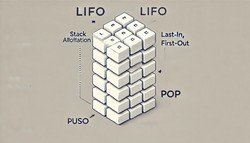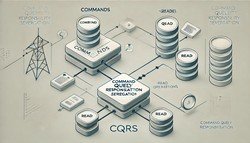Disaster Recovery Plan

(Representational Image | Source: Dall-E)
Quick Navigation:
- Disaster Recovery Plan Definition
- Disaster Recovery Plan Explained Easy
- Disaster Recovery Plan Origin
- Disaster Recovery Plan Etymology
- Disaster Recovery Plan Usage Trends
- Disaster Recovery Plan Usage
- Disaster Recovery Plan Examples in Context
- Disaster Recovery Plan FAQ
- Disaster Recovery Plan Related Words
Disaster Recovery Plan Definition
A Disaster Recovery Plan (DRP) is a structured approach for responding to unplanned incidents that threaten an organization’s IT infrastructure. It includes policies, tools, and procedures to ensure business continuity by recovering lost data, restoring IT services, and minimizing downtime.
Disaster Recovery Plan Explained Easy
Imagine you have a favorite video game, and you save your progress regularly. If something happens—like the game crashing—you can reload your last saved game and continue playing. A DRP works similarly for businesses to restore systems quickly.
Disaster Recovery Plan Origin
The concept of DRP originated in the 1970s when corporations began relying on centralized computing. Over time, advancements in cloud computing and cybersecurity improved disaster recovery strategies.
Disaster Recovery Plan Etymology
The phrase "Disaster Recovery Plan" combines "disaster," referring to a catastrophic event, "recovery," which means regaining what was lost, and "plan," indicating a structured approach to achieving restoration.
Disaster Recovery Plan Usage Trends
With rising cyber threats and digital reliance, disaster recovery planning has become essential. Cloud-based recovery solutions and automated failover systems are now widely adopted to ensure continuity.
Disaster Recovery Plan Usage
- Formal/Technical Tagging:
- IT Security
- Business Continuity
- Risk Management - Typical Collocations:
- "Implementing a disaster recovery plan"
- "Business continuity and disaster recovery"
- "Cloud-based disaster recovery"
Disaster Recovery Plan Examples in Context
- A financial institution implements a cloud-based disaster recovery plan to restore critical services after a ransomware attack.
- A hospital follows its disaster recovery procedures to recover patient records after a server failure.
- An e-commerce company tests its disaster recovery plan by simulating a data center outage to ensure minimal downtime.
Disaster Recovery Plan FAQ
- What is a Disaster Recovery Plan?
A DRP is a documented strategy outlining how an organization will restore IT infrastructure and operations after a disaster. - Why is a Disaster Recovery Plan important?
It minimizes downtime, protects data, and ensures business continuity. - What are the key components of a DRP?
A DRP includes risk assessment, backup procedures, and recovery objectives. - What is RTO and RPO?
RTO (Recovery Time Objective) defines downtime limits, while RPO (Recovery Point Objective) determines acceptable data loss. - How does cloud computing improve DRP?
Cloud-based solutions provide automated backups and faster recovery times.
Disaster Recovery Plan Related Words
- Categories/Topics:
- IT Security
- Cloud Computing
- Risk Management
Did you know?
After 9/11, many financial institutions had backup data centers in New Jersey, allowing them to resume operations despite losing primary infrastructure in Manhattan. This reshaped modern disaster recovery strategies.
Authors | Arjun Vishnu | @ArjunAndVishnu

PicDictionary.com is an online dictionary in pictures. If you have questions or suggestions, please reach out to us on WhatsApp or Twitter.
I am Vishnu. I like AI, Linux, Single Board Computers, and Cloud Computing. I create the web & video content, and I also write for popular websites.
My younger brother, Arjun handles image & video editing. Together, we run a YouTube Channel that's focused on reviewing gadgets and explaining technology.
















Comments (0)
Comments powered by CComment